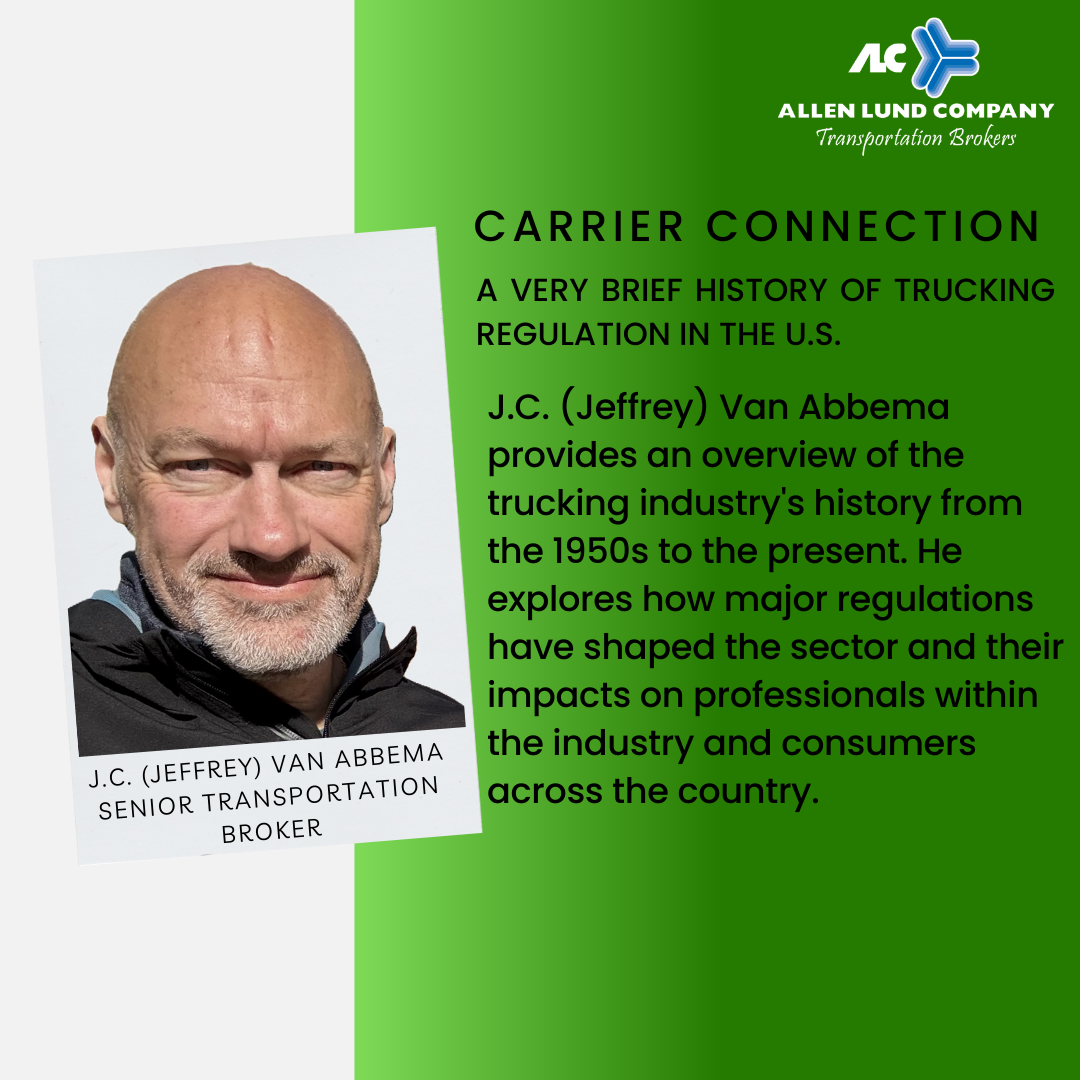
From the 1950s through the 1970s, the transportation industry expanded as our consumer culture grew and the Interstate Highway System was established. By the 1970s, truck driving was a financially rewarding career—romanticized on TV, in the movies, and on the radio. During this time, the industry was largely controlled by the government through price controls and geographic restrictions on where carriers could operate.
The Motor Carrier Act of 1980 significantly deregulated the industry, allowing for more competition as the industry was de-unionized and pricing controls were removed. Shippers and consumers benefited from the decreasing costs passed down to them, and many more carriers and drivers were able to enter the industry. This act also introduced the rise of transportation brokers and 3rd party logistics companies.
For the next 20 years, the industry grew but remained largely unchanged until the Federal Motor Carrier Safety Administration was created on January 1, 2000. With an emphasis on safety, this agency introduced regulations that limited a driver’s hours of service and required drivers to pass regular medical exams. They also, through the CSA (Compliance, Safety, and Accountability), continue to oversee a carrier’s safety performance through inspections and crash investigations, the goal being to identify unsafe, high-risk carriers. The requirement that all trucks have electronic logs by the end of 2017 was a continuation of these safety policies, and the future may hold even stricter requirements, such as governors, which limit a truck’s maximum speed.
For further information, the most current mission statement of the FMCSA (last updated in 2013) can be found at: https://www.fmcsa.dot.gov/mission
Read the original article here


